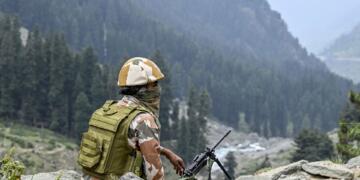When it comes to India’s maritime security and strategy, one factor that has traditionally defined it has been the dominant role of the Indian Navy and somewhat secondary or overshadowed role of the Indian Coast Guard (ICG). Curently, the lack of infrastructure is to blame for the somewhat subdued role of the Indian Coast Guard, which can be gauged from the fact that the Coast Guard still does not have a training academy of its own, and the Indian Coast Guard Academy is undergoing construction at Azhikkal, Kannur, Kerala. Currently, the Coast Guard personnel undergo basic military training at the Indian Naval Academy, Ezhimala.
However, the Indian maritime strategy is undergoing a marked change even as India has come to embrace a greater role in the Indo-Pacific region. The importance that the ICG plays in the enhancement of India’s role in the strategically crucial region can be understood from the fact that the Coast Guard is mandated to carry out patrolling and surveillance up to the Exclusive Economic Zone of India (EEZ).
India which traditionally enjoys a rich maritime heritage, enjoys a very advantageous location. India boasts of a wide Exclusive Economic Zone that extends upto of about 2.37 million square km, wherein India enjoys the exclusive legal right to utilise all living and non living resources.
India’s maritime interests are growing at a brisk pace in terms of sea trade, off-shore hydrocarbon explorations and other economic activities in the Exclusive Economic Zone (EEZ). India is also looking at a US $250 billion maritime economy by the year 2024. Moreover, India’s exclusive rights to explore poly-metallic nodules from the seabed in the Central Indian Ocean Basin (CIOB) were extended by five years in the year 2017.
This is a huge opportunity for India as the estimated poly-metallic nodule resource potential is 380 million tonnes, containing 4.7 million tonnes of nickel, 4.29 million tonnes of copper and 0.55 million tonnes of cobalt and 92.59 million tonnes of manganese.
The stakes are obviously very high and this is what the Coast Guard is supposed to protect, which necessitates that the fourth Armed Force of the Union established in 1978 undergoes a redefinition. Besides, India’s sea border (the 7500 km coastline) is easier to breach and the geopolitical scenario is such that India must remain prepared to safeguard its interests in the Indo-Pacific Region at all times.
The bigger threat obviously comes in the form of Beijing’s ‘string of pearls’ strategy, wherein China is looking to expand its influence in the Indian Ocean Region by raising military or commercial points at strategically located points in order to encircle India and contain Indian influence in the Indian Ocean Region (IOR).
China is competing for influence in the Indian Ocean Region, and last month the Indian Navy had chased away a suspected Chinese vessel, Shi Yan 1, which was spotted conducting research activity near Port Blair when it was expelled by the Indian Navy. However, the incident made it clear that India needs to be vigilant at all times in protecting her rich maritime resources and interests.
China is interested in the IOR for both maritime and military dominance, as well as control over the trade route. Militarily, China seeks to encircle India and become an unbeatable force in the IOR, also strengthening China’s position in the Arabian Sea. CPEC, BRI, and other adventures in the Indian Ocean are all a part of a plan to encircle India and become a threat for us. A strengthened Chinese position in the IOR will further keep the United States at bay from indulging in military conflict. However, India is in no mood to facilitate a walkover by the Chinese.
Apart from the Chinese threat, India needs to guard its coastline on the Western front, where the challenge is to tackle Pakistan’s efforts of fomenting maritime terror. Last year, the Indian Navy Chief had revealed that as per intelligence reports, terrorist group, Jaish-e-Mohammed was training its terrorists to carry out underwater attacks. He had said, “We have received intelligence that the underwater wing of Jaish-e-Mohammed is being trained. We are keeping a track of it and we assure you that we are fully alert.”
More recently, Pakistan also yielded a 55 sq km land to a Chinese firm Near Harami Nala along the Gujarat Border with the site of construction being just 10 km from the International maritime boundary. Harami Nala is a water channel in a marshy area along the international border which is accessible from the Pakistani side. The topography makes it difficult for security personnel to react swiftly to infiltration bids. The BSF has time and again intercepted Pakistani boats in the area, showing how the area can be a major security concern for New Delhi.
It is in the context of these reasons that the Modi government has focussed its energies upon empowering the ICG. Fortunately, a lot has changed since the 26/11 terror attack in 2008 had exposed some serious loopholes in India’s maritime security. Currently, the Indian Coast Guard has more than 150 platforms (operational ships and boats) as against some 60 platforms (operational ships and boats) that it had in 2008. According to Natarajan, Additional Director General and Coast Guard Commander Western Sea Board, By 2022, “We will be having 200 platforms. The number of aircraft will also be increased from 62 to 100 in the same period.”
A few days ago, the ICG also commissioned two ships- ‘ICGS Amrit Kaur’ and ‘ICGS Annie Besant’. Recently, the Coast Guards of India and Japan also conducted a joint exercise, named ‘Sahyog-Kaijin-XV’, wherein ships, choppers and personnel from the two sides engaged in a number of activities. Moreover, last year the ICG was also given the power to board, search any vessel and arrest people for offences within the maritime zone of the country. Earlier, the ICG did not have the power to board any vessel passing through India’s Exclusive Economic Zone (EEZ). This is line with the ongoing process of redefining the ICG’s role and gearing it up for tackling the emerging challenges in the IOR so that India’s maritime interests are sufficiently safeguarded.


































